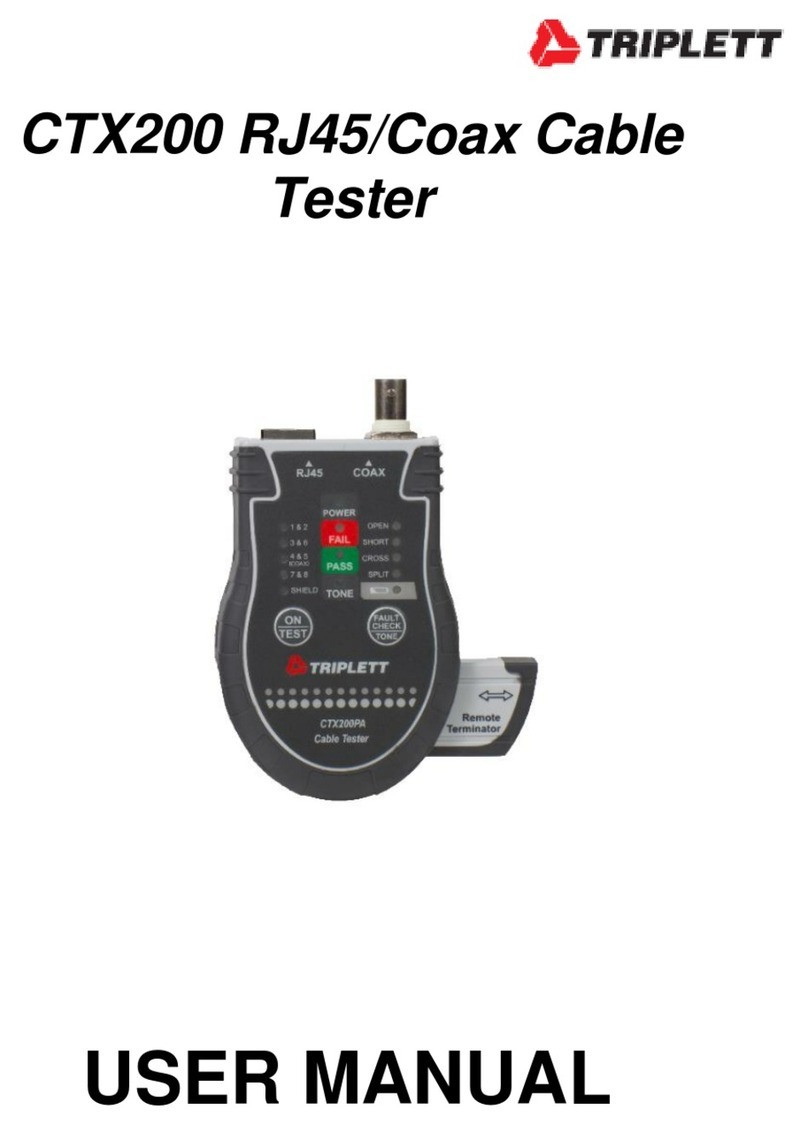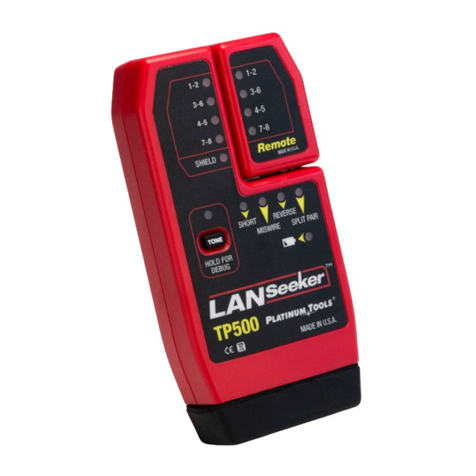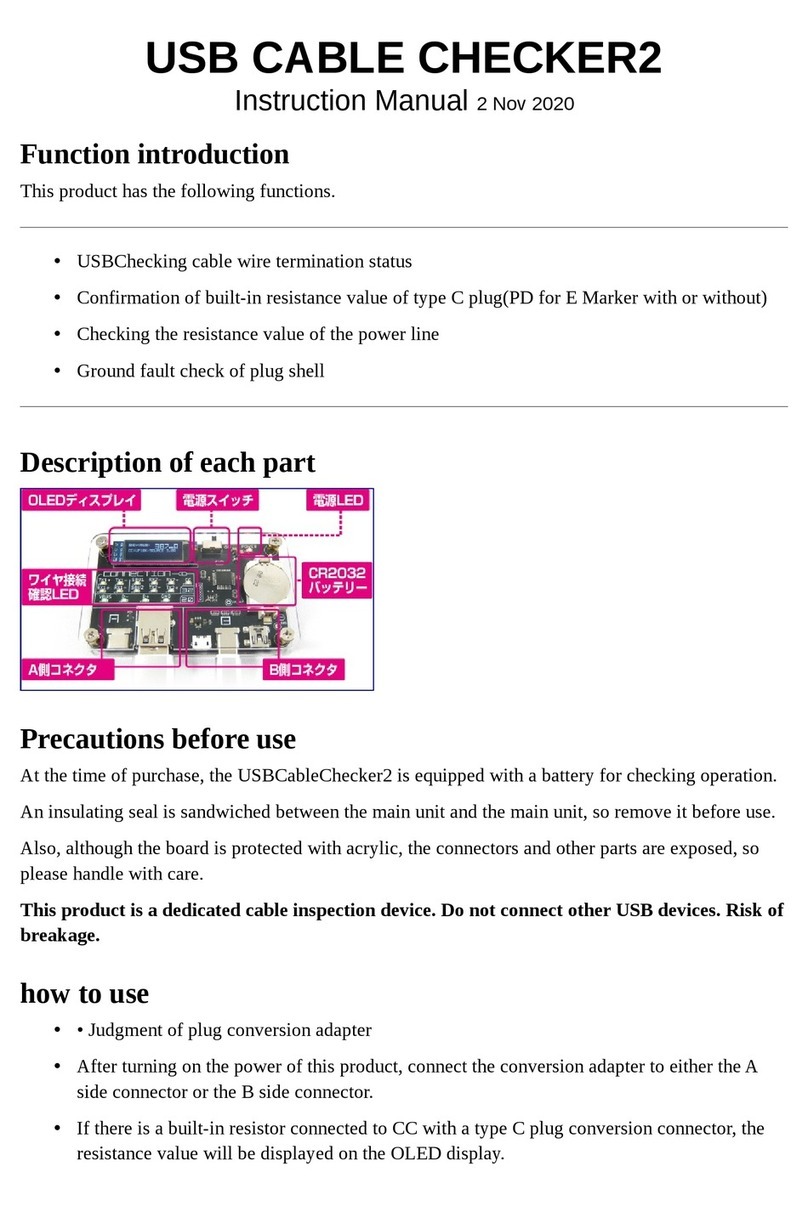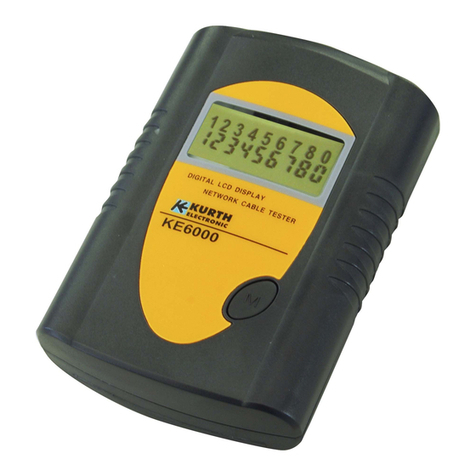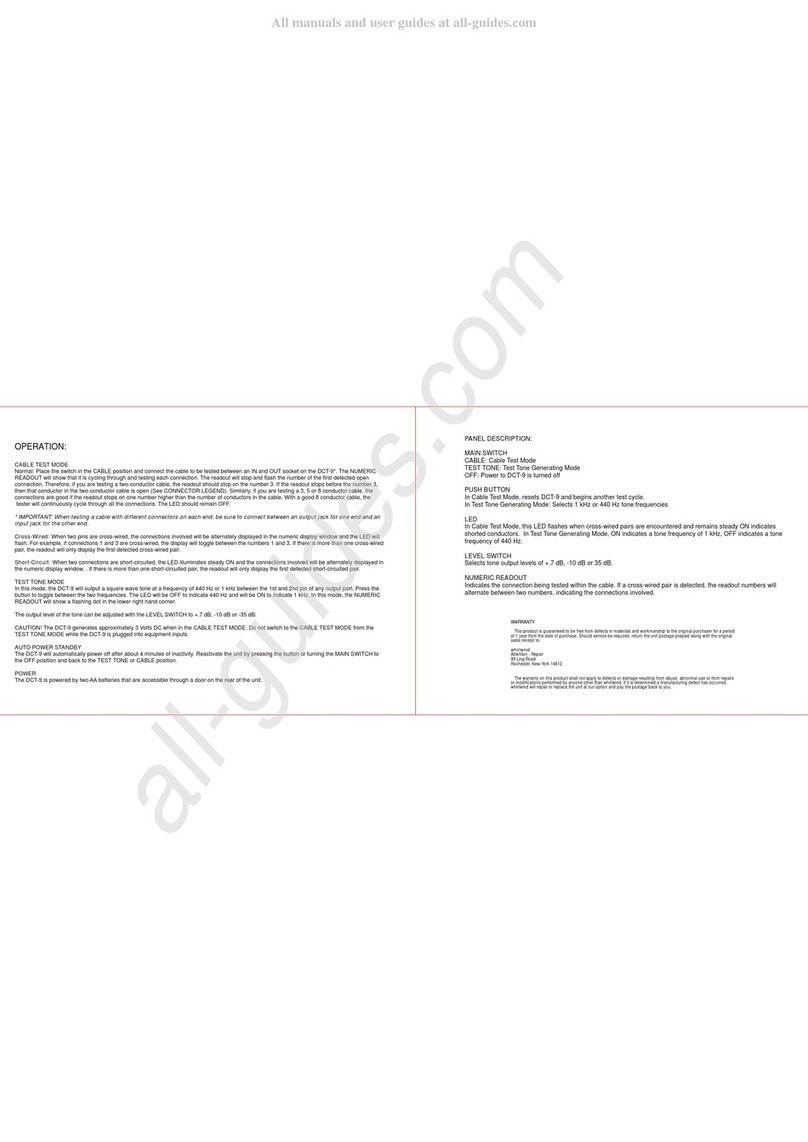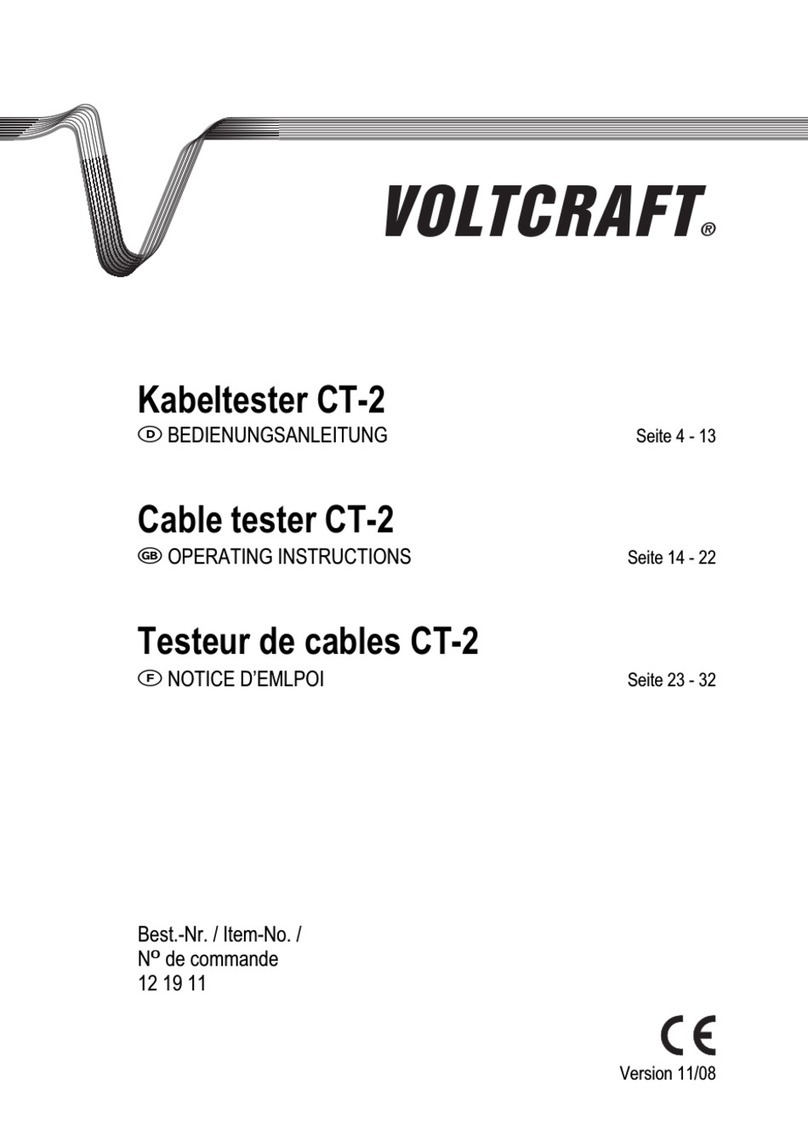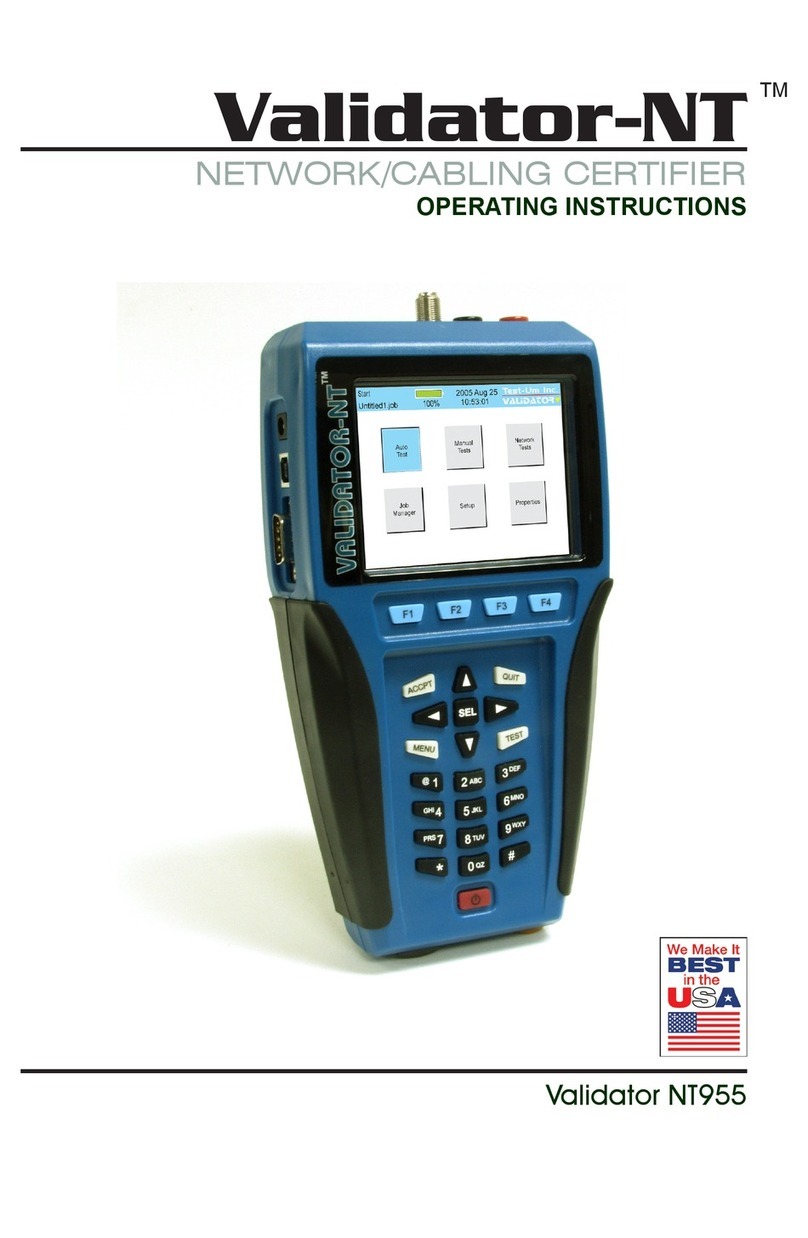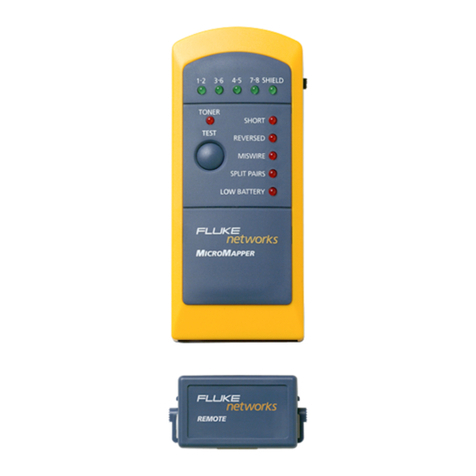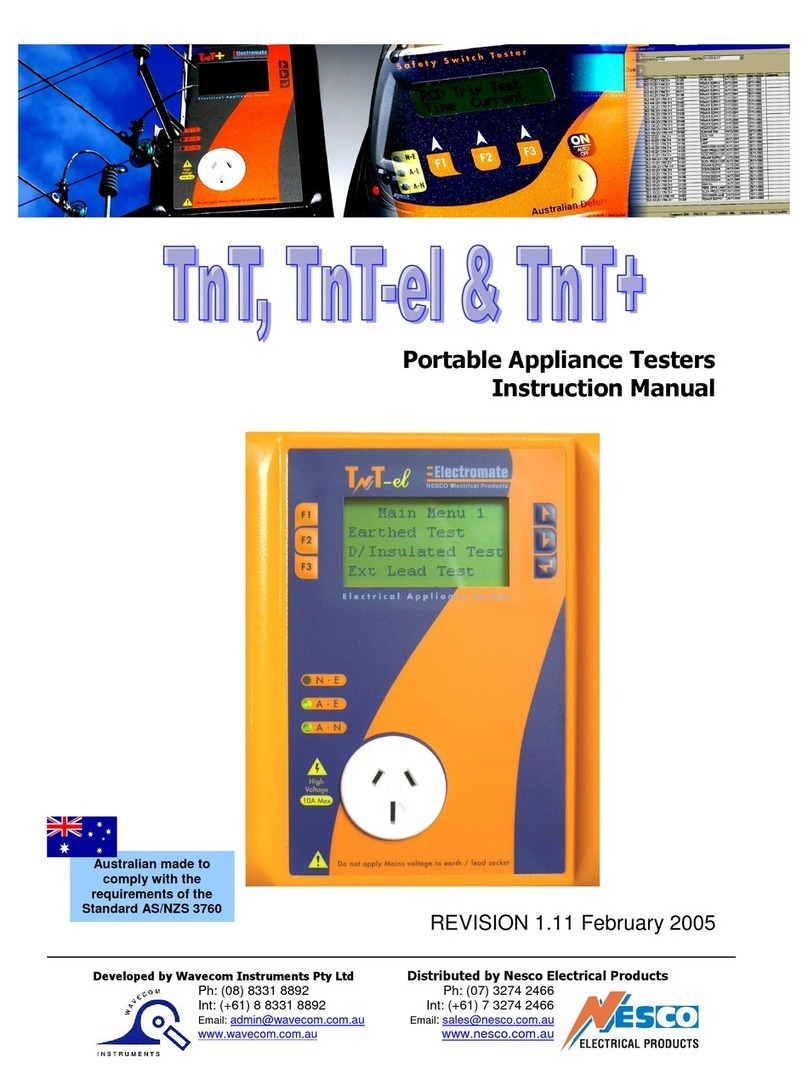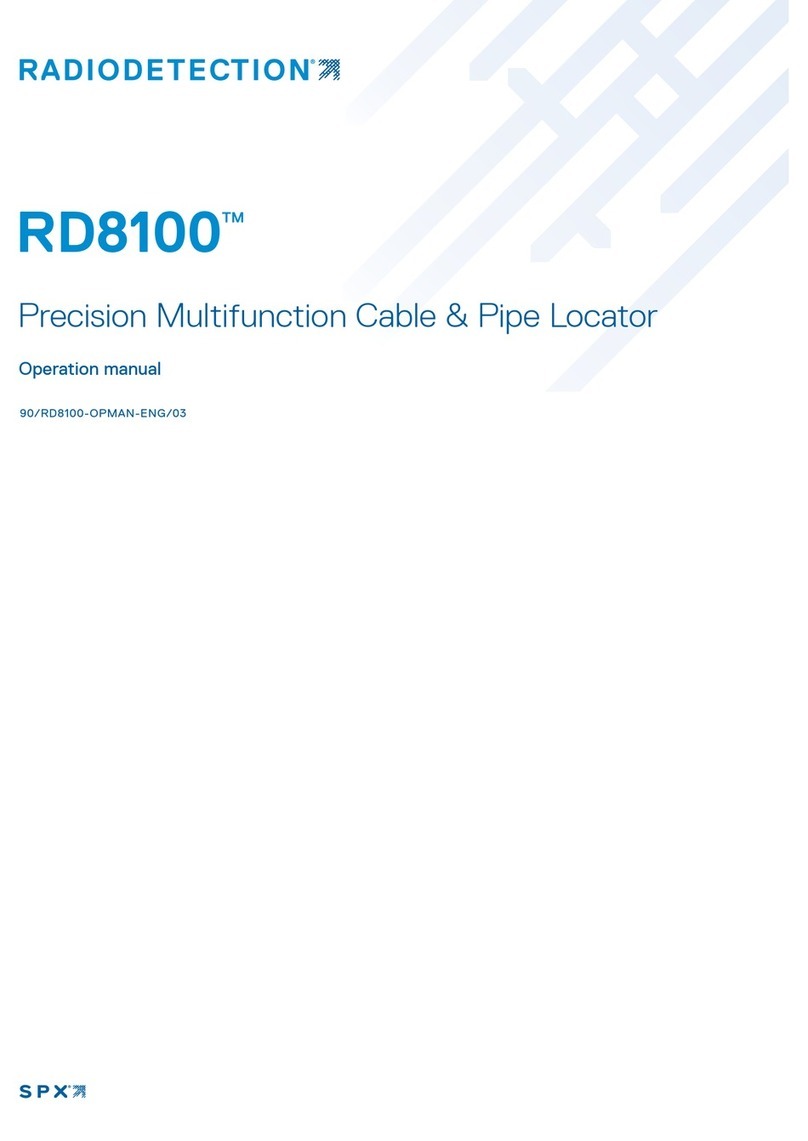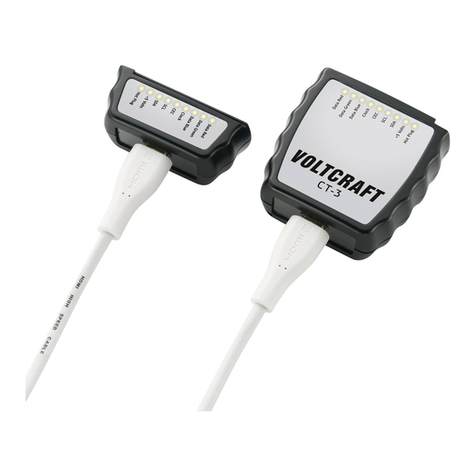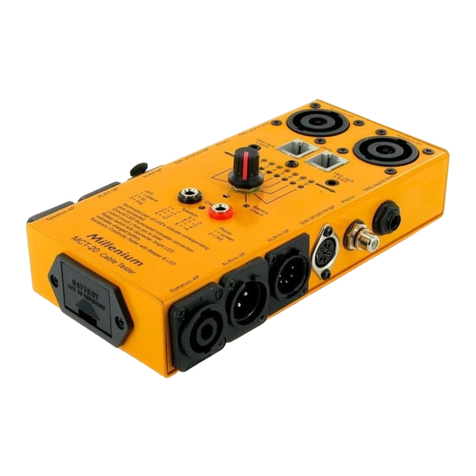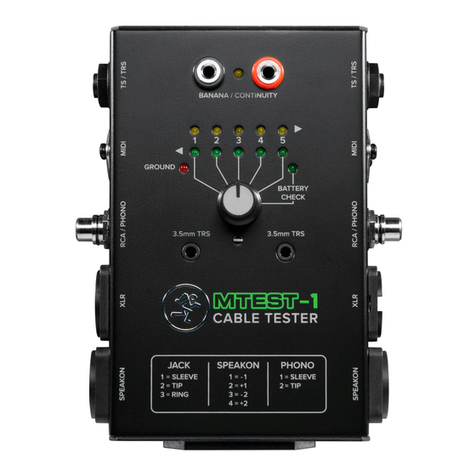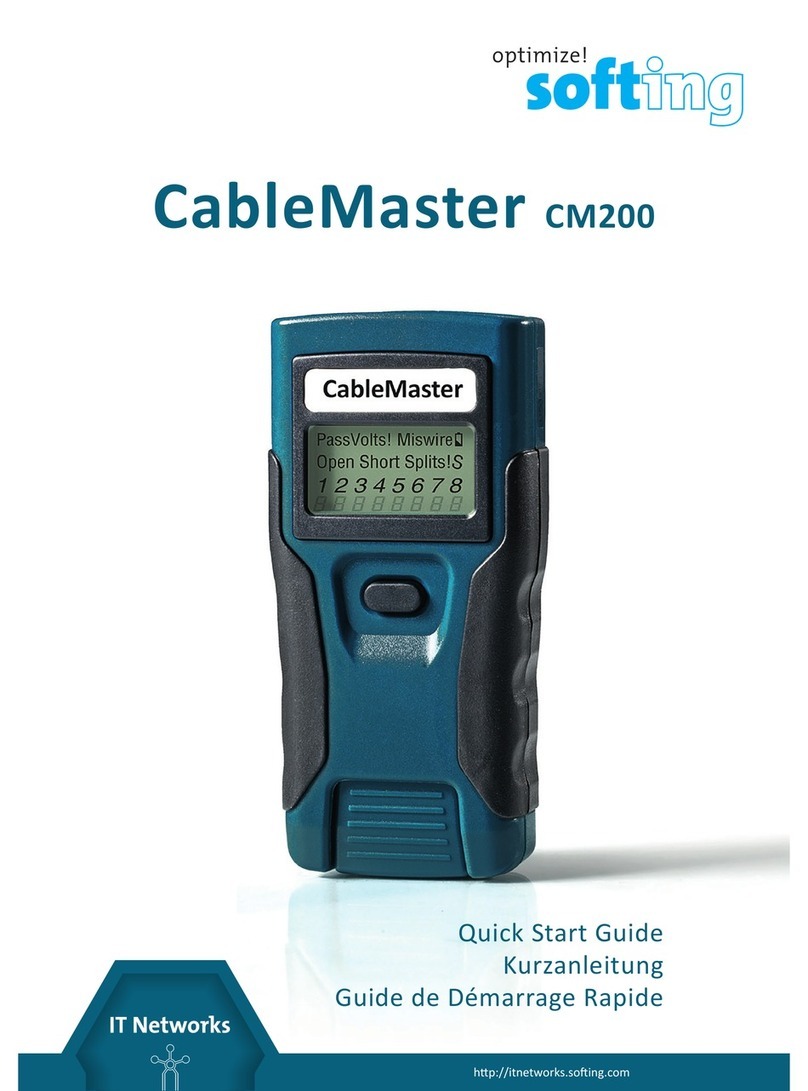
VOLUME/
SENSITIVITY
OFF
0 9
TEST MODE
TONE MODE
LO LOW PITCH TONE
PITCH TONE
WARBLING TONE
TONE MODE
HI 1
TONE MODE
HI 2
1 2
1 2
3 4 5 6
123456
3 6 4 5
7 8
7 8
7 8
Tone will be sent through selected pins
Tone will be sent through selected pairs
Tone will be sent through all 8 pins
RJ45
Remote ID:
5 remotes
(numbered 1-5)
Remote ID
Patch Panel
Tester
5. Press ON/OFF button to turn on the tester. Press the Data button to select the
wire test function.
6. Interpret the results using the Wiring and Display examples for Data further
in this manual.
· Testing Shielded Cables
When testing a shielded cable, the Shield indicato will appear on the display
if the shield is connected at both ends of the cable. If the shield is shorted to a
wire within the cable, the Shield indicator and the corresponding shorted pin
will ash. A dash mark under the ashing pin will appear indicating a short.
It is necessary to use the Signalprobe RJ-F.
1. Connect the cable under test to the RJ45 port on the tester.
2. Press the ON/OFF button to turn on the Signaltester RJ-F, than press the Data
button to select the data wire test function.
3. Press the Tone button to activate the Tone Generator.
4. Repeatedly press the Tone button to select the desired tone.
Refer to sequence chart for explanation of the tone selection.
5. The connector pins the tone is being sent through will be shown on the bot-
tom of the display. Repeatedly press the Cycle button to select the desired
pins.
Refer to sequence chart for explanation of the pin selection.
· When tracing a cable run from the tone generator to the end of the cable,
applying the tone on a single pin will allow the tone to be detected at a greater
distance from the cable.
· When trying to locate a cable in a equipment room or patch panel, sending the
tone through all pins or a single pair will limit the tone signal from spreaking to
other nearby cables.
· The tone will be loudest when the probe tip is placed directly on the wires the
tone is being sent through at the end of the cable.
· When sending a tone through a single pair, verication can be made by short-
ing the suspected pair. The tone will be very faint when the pair the tone is
being sent through is shorted.
The Remote IDs can be used to identify cable runs from the patch panel to a wall
port. Each identier has a labeled ID number. When the tester is connected to a
cable that has an identier attached at the other end, the tester will display the ID
number that is marked on the identier.
1. Connect the numbered remote IDs to the port for each cable that needs to
be identied.
2. At the wiring closet or patch panel, connect the unknown cable to the RJ45
port on the Signaltester RJ-F.
3. Press the ON/OFF button to turn on the tester. Press the Data button to select
the data wire test function.
4. If the cable being tested is connected to one of the remote IDs, the display
will indicate the number that corresponds to the remote.
·the rJ45 remote idS do Not teSt the wiriNg oN the cable.oNly the remote caN
ideNtify wiriNg faultS. the remote may Not ideNtify the cable if the cable iS
